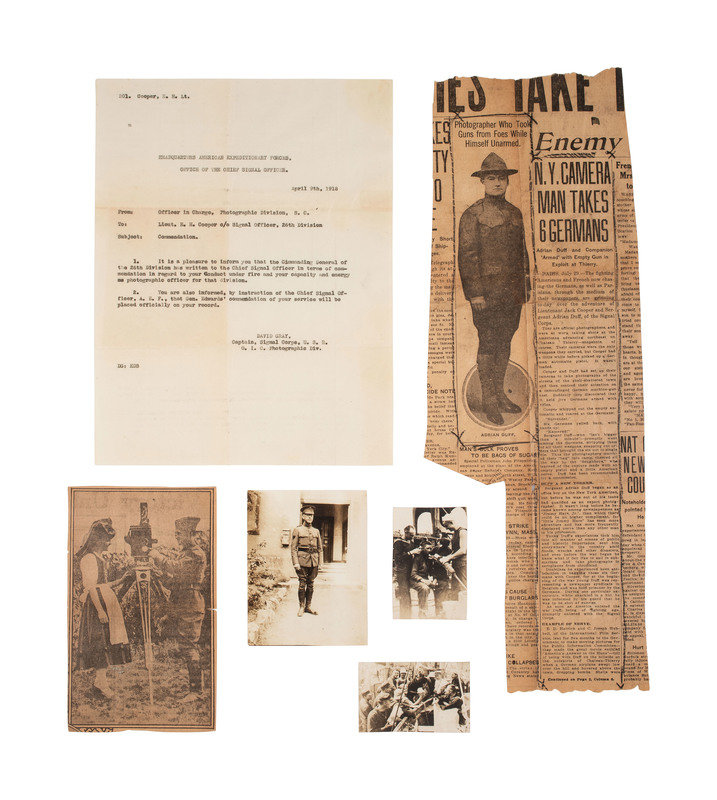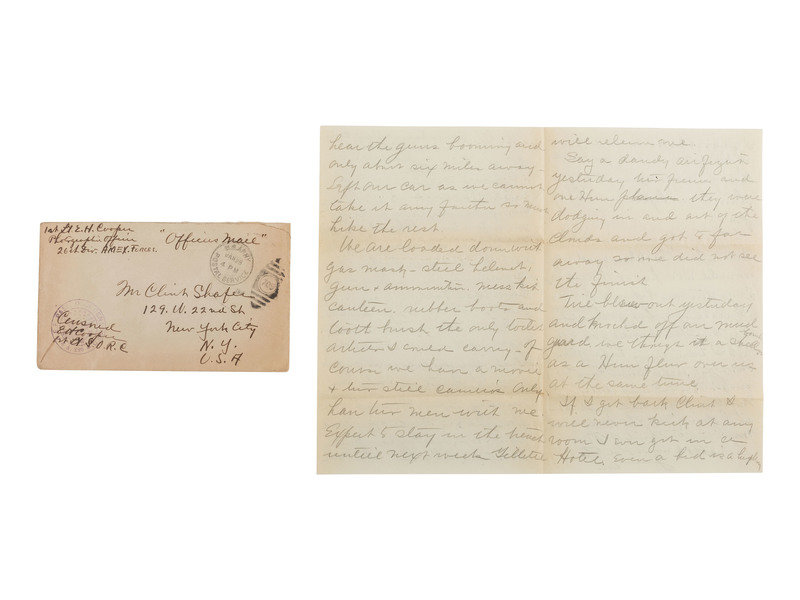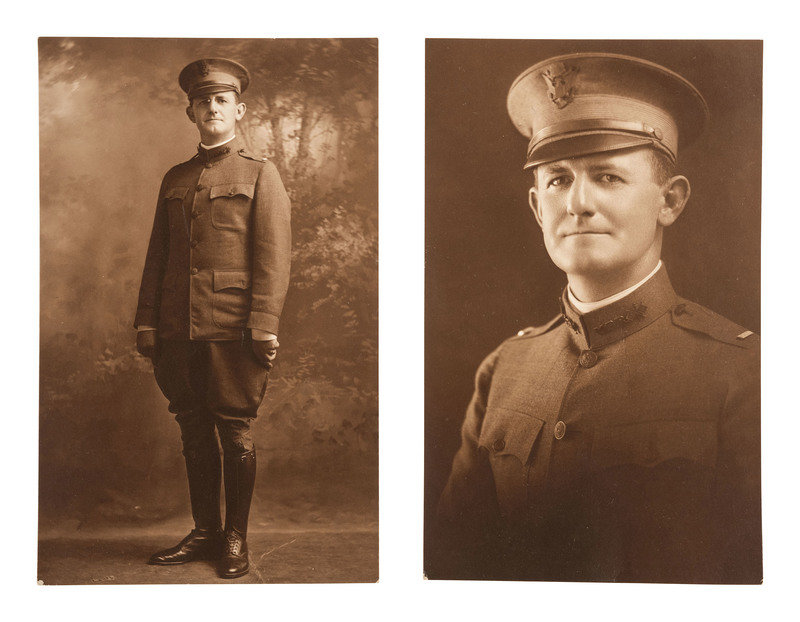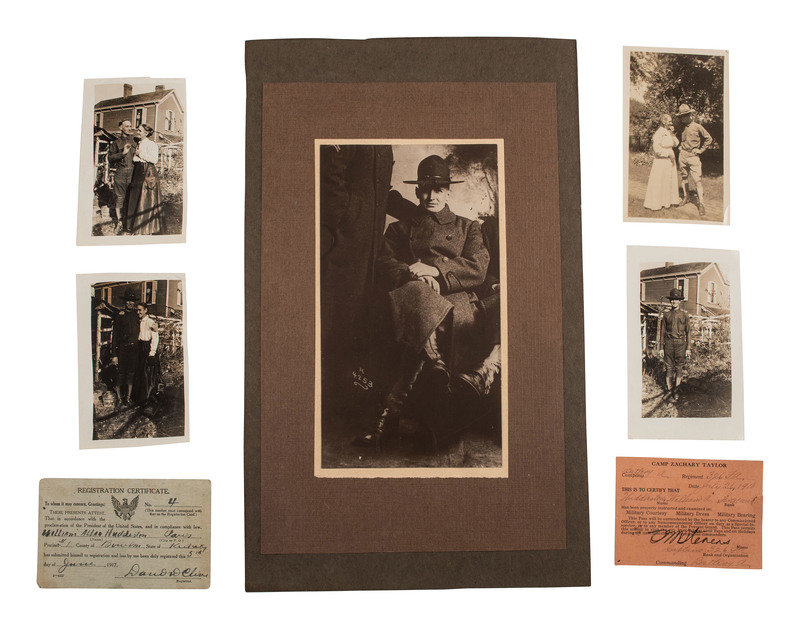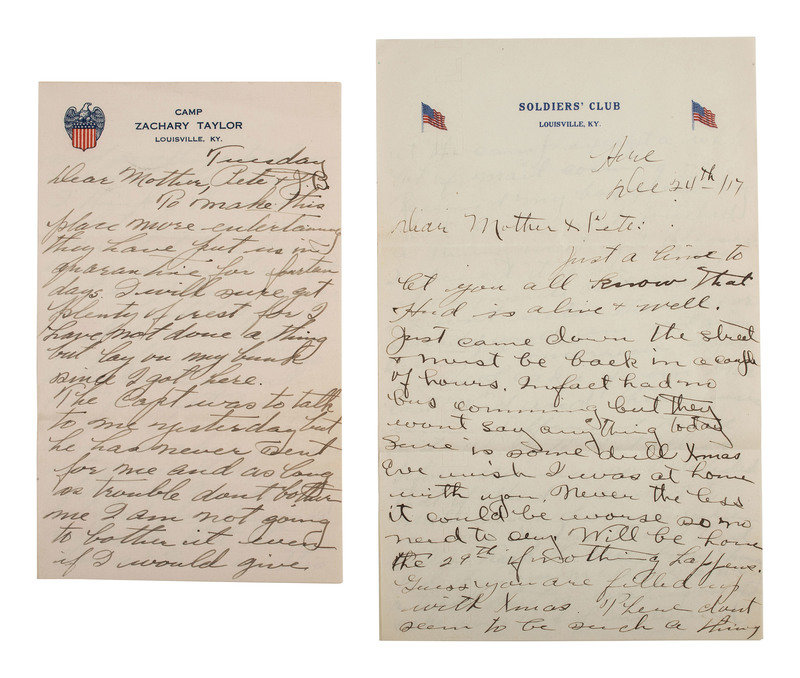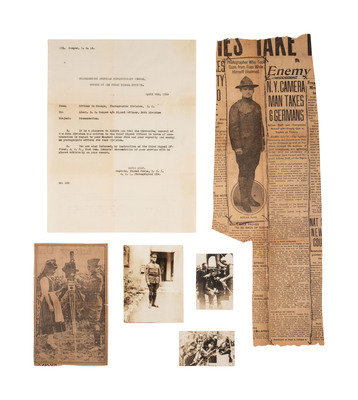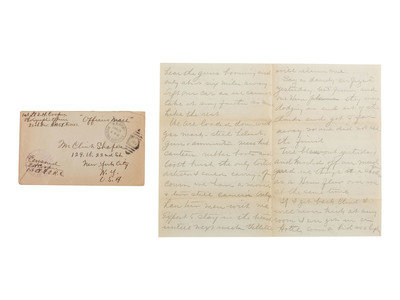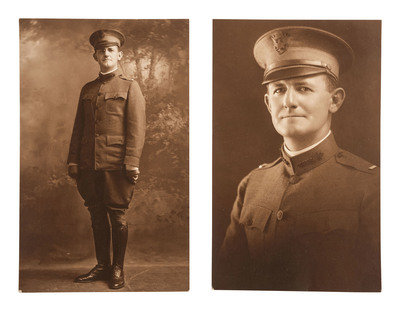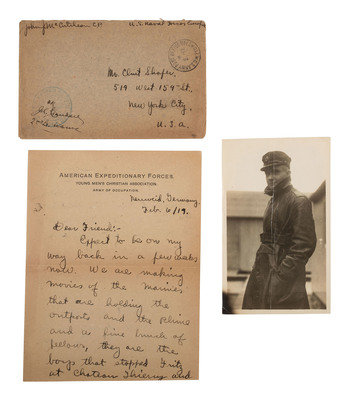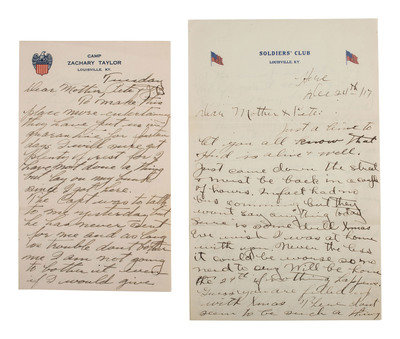Lot 557
[WORLD WAR I]. Letters from soldiers serving in the Photog. Section, Sig. Corps, 26th Div. A.E.F.
Sale 1252 - American Historical Ephemera & Photography Online
Lots Open
Nov 30, 2023
Lots Close
Dec 11, 2023
Timed Online / Cincinnati
Own a similar item?
Estimate
$300 -
500
Price Realized
$189
Sold prices are inclusive of Buyer’s Premium
Lot Description
[WORLD WAR I]. Letters from soldiers serving in the Photog. Section, Sig. Corps, 26th Div. A.E.F.
Approximately 30 letters, 8 postcards, and 5 photographs associated with still photographers and cameramen enlisted with the Photographic Section, Signal Corps (Attached), 26th Division, American Expeditionary Forces, and Photo Section, Bureau of Navigation, U.S. Naval Headquarters. Majority of letters are written by John J. McCutcheon (1889-1966), Chief Photographer, Photo Section, Bureau of Navigation, U.S. Naval Forces Europe and Captain Edwin H. Cooper (1881-1948), US Army Signal Corps, Photographic Section, and are addressed to (Ira) Clinton Shafer (1875-1950), a photographer employed at a Dry Plate Co. in New York City. Despite having passed through the censors, the letters contain fascinating details about the work of soldier-photographers as they photographed and filmed the devastation of World War I.
Describing his work along the front, Cooper wrote from France on 17 January 1918: "If you could see me now, we have been following up to the front with our boys and ex[pect] to be in the trench tomorrow night. I have not had my clothes off for several nights and a bath is only a memory....We can hear the guns booming and only about six miles away. Left our car as we cannot take it any further so must hike the rest. / We are loaded down with gas masks, steel helmet, gun & ammunition, mess kit canteen, rubber boots and tooth brush the only toilet articles I could carry, of course we have a movie & two still cameras only have two men with me. Expect to stay in the trench until next week...." Eleven days later he writes again: "...my nice tour of France is over and we are face to face with grim reality.... No doubt you will see my films soon in the states, as we rushed them back to the Lab last night they are the first of the kind ever made since we have gone in for earnest and some new vues."
Captain Edwin H. Cooper received the Distinguished Service Cross for extraordinary heroism while serving with the Photographic Section, near Torcy, France, 18 and 20 July 1918, during which operation Cooper advanced under enemy fire to an exposed position in a shell hole in front of attacking troops in order to carry out a photographic mission, and went to the rescue of a wounded soldier, and later again advanced to a forward position in order to secure pictures of the attacking troops.
McCutcheon writes a stirring description of Armistice Day in his letter of 15 November 1918: "...when the news flashed on the bulletin boards some of the people cried with joy, other shouted and sang and inside of an hour the streets and avenues were one solid mass of humanity....The avenues are line[d] with trophies, big German guns, planes, tanks, thousands of machine guns... The buildings are covered with flags and Paris is once more ablaze with light, the first time in four years, the people are so happy the[y] are nearly crazy, old men, old women, and girls would run up and hug and kiss the Americans by night the streets were so packed that you couldn't move, it was a sight I will never forget." McCutcheon also writes often about his aerial work, writing on 27 December 1918 after the armistice: "I have just finished my pictures of my last trip, which was a wonder. We made a complete record of all the Naval Air stations in France from the air and I have been doing alot of flying. I suppose you received my letter telling of my photographing the President's Fleet, I flew out 80 miles to sea and was the first to see the fleet as she entered European waters, was in the air for four hours."
I. Clinton Shafer, an Ohio native, was identified as a photographer in the 1900 Census, and later relocated to Manhattan. The 1920 US Federal Census identifies him as an agent for a Dry Plate Co.
[With:] Two other WWI letter groupings: approx. 25 letters from Sergeant William A. Huddleston (1892-1918), who served in the 159th Field Artillery Brigade, 326th Field Artillery Regiment, Battery A,. Huddleston's letters are written while training at Camp Zachary Taylor in Louisville, Kentucky, the Headquarters of the 84th Division. Huddleston, originally from Paris, Kentucky, died of pneumonia before leaving for the European front. Also accompanied by 5 photographs of Huddleston.
[With:] Approx. 60 letters from Ohio native Private Belford M. Wilt (1891-1962), initially with 159 Depot Brigade, then Co. F, 155th Infantry, AEF, and later with the Motor Transport Corps, HQ Garage Detachment, 3rd Army AEF. Wilt enlisted in May 1918 and was discharged July 1919. Wilt's letters span his training at Camp Beauregard, Louisiana, through the end of war service in Koblenz, Germany.
Condition Report
Contact Information
Auction Specialist
